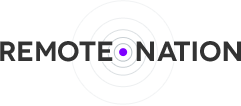
RN: It is easy to argue that a geographically centric office can more effectively build a stronger work culture than a remote/distributed work environment. What are some steps you think businesses with remote workers can do to also build a strong work environment?
Cramer: I tend to agree that it is easier to build a stronger work culture in a geographically centric office as compared to a remote scenario. However, I think it is possible to build a positive culture in a remote team if you have the right people on the team. I think the answer is to facilitate structure for the team. If there is no structure, it is so easy for remote workers to drift off into their own caves and not interact with others on the team. However, if good structure is in place, each remote team member has an opportunity to interact with others on the team in positive ways. Creating the right structures and contexts for interaction is the fabric of culture. In a centralized office, some of these structures and contexts happen naturally, but in a remote setting, it is necessary to be more intentional about these things.
RN: Being able to successfully work remotely is a skill set that takes time to develop. What steps do you take as an employer to make sure someone is ready for a distributed work environment?
Cramer: The easiest way to deal with this is to hire people who have had prior experience working as part of a remote team. If that is not the case, you really need to look for evidence that the individual is self directed and can operate autonomously for the most part. I do think in most cases that if an individual can be successful in a self directed capacity working in an centralized office setting, there will be no trouble translating this to a remote setting. Other things you can do are to set up regular status meetings with people to monitor progress. We’ve used short daily standup meetings with remote team members to create a regular daily opportunity for managers to interact with team members. One of the items on the agenda is, “What roadblocks are you facing today?” Forcing everyone to answer this question exposes any problems that may be impeding progress. It also creates an opportunity to solve any problems at a regular known time so that everyone can get back to work. This is arguably more efficient than the interruption style of roadblock removal that is more present in centralized offices.
RN: The idea of being able to work from home, a favorite coffee shop, or wherever one wants sounds ideal, but what are some obstacles you think unprepared remote workers might experience?
Cramer: I’ve seen some people try to work remotely without establishing proper boundaries. This can create a lot of problems for remote workers. If you are working from a home office or a coffee shop or the beach, you are still working. It is important to make sure that the environment that you are working in is conducive to productivity. This means that you should not have any other responsibilities that may distract you, like watching the kids, waiting for the plumber to show up, etc. Also, I think a quiet place to work is essential if you ever have to talk to other people you work with. We’ve had team members try to work 100% out of various coffee shops in the past. Between the bad WiFi, loud background noise, and variable conditions at coffee shops, it really starts to take a toll on productivity. In my view, this is not professional or acceptable. This may mean that you have to talk with your spouse or roommate to make sure they understand your commitment. It also means that you’ll need to create a dedicated workspace that is distraction free. We present our team members with the concept of a minimum viable office that defines these conditions for them.
RN: Tracking progress and meeting milestones is paramount to the success of every business, what are some programs that you rely on to make sure everyone is on track?
Cramer: We are heavy users of Trello, Harvest, Pivotal Tracker, Slack, and Google Apps. There are a large variety of excellent tools out there than can help remote teams keep on track even better than centralized teams using a whiteboard. I think this is really a matter of each team figuring out which system is best for them.
RN: Overall, how do you think you have professionally and personally benefitted from having a business that allows for remote working?
Cramer: I’ve been able to be closer to my family. Interacting with them at lunch every day is great. I’ve also been able to travel more. I have regularly gone on more extended trips than I otherwise would have been able to, because I’m able to work at full capacity while on the road. I think building and managing a remote team has also forced me to build a more organized and efficient system behind the company. I believe we’ve benefited from better documentation and systems. A geographically centric team that I’ve been a part of in the past was more apt to rely on ad-hoc communication to make things work. While this isn’t bad, having everything be part of a clearly documented and universally accessible system has benefits that cannot be overstated. A remote team needs to do this in order to survive.
RN: Finally, for companies considering remote working, what are some books and sources you’d recommend they read?
Cramer: The books Remote and Rework [both by Jason Fried and David Heinemeier Hansson] are good introductory books on the topic. Also, the RemoteNation.co website is a great source to keep an eye on 😉














